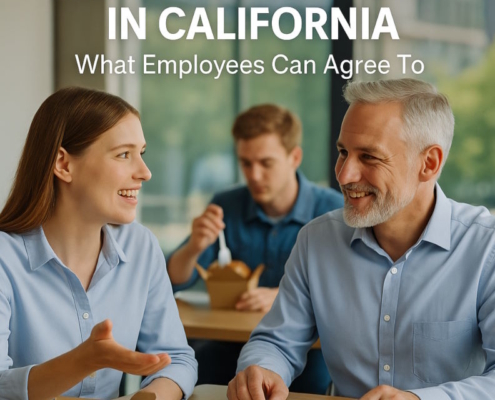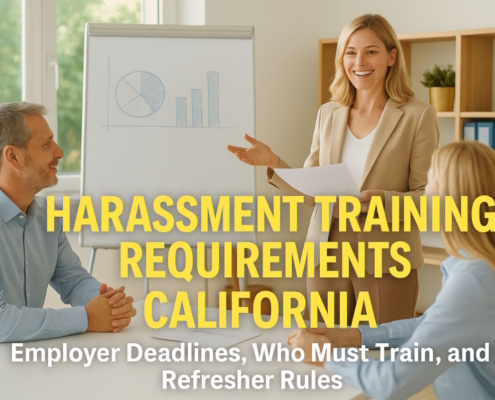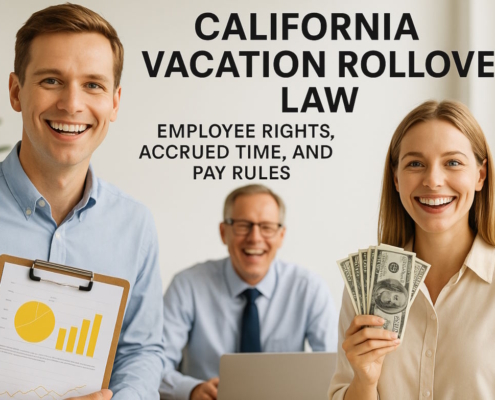What To Expect When You Give Your Two Weeks Notice
Your employer may terminate your employment right away, permit you to work the full two weeks, or offer you a raise to stay.
Two weeks’ notice is the advance warning employees give employers when they resign. Some employers allow employees to work the full two weeks of their notice period. Others will ask employees to leave immediately. Sometimes an employer may ask employees to stay longer, but an employee can refuse this if they wish.
If you haven’t put in your two weeks notice, check out these articles:
- When to Give Two Weeks’ Notice
- Two Weeks Notice Letter
- Does an Employee Need to Give Two Weeks’ Notice to Their Employer
- How to Give Two Weeks Notice
In this article, our employment attorney discuss what to expect when you give your two weeks notice of resignation as follows:
Expectation 1: Being Asked to Stay and Maybe a Pay Raise
If the resigning employee is high-ranking or vital to operations, an employer might offer incentive to stay. Vacancies in these types of positions may be hard to fill or may disrupt operations. These offers may cause employees to be conflicted, especially if they have another job lined up.
Employees should prepare themselves if their employer does offer incentive to stay. They should determine if they would accept a counteroffer and if so, what would be the minimum they would accept. Employees should consider their overall career goals and job satisfaction when making this decision.
If an employee is low-level or easily replaceable, then they may not be asked to stay. This shouldn’t be taken personally, it is just that their vacant position is easily filled.
Pay Raise – if you’re as awesome as you think you are, then you may expect the employer to offer you higher pay – pay raise. The pay raise may be 10% to 20% higher than your current pay.
Expectation 2: Being Asked to Stay For Longer Than the Notice
Sometimes, an employer may ask an employee to stay beyond their notice while they find a replacement. This will often happen when the company is approaching their busy season or if the employee’s role requires specialized knowledge.
Employees should not be surprised if they are asked to stay longer, but should consider if they are prepared to do so. If they have a job lined up, then they might be bound by the start date of their new job and unable to stay longer. In that case, they should explain this in a professional manner.
If the employee does not have a new job lined up, it is at their discretion if they wish to stay longer. Employees that agree to stay longer should be firm on how much additional time they can stay and type a new letter of notice with their final date.
Expectation 3: Refusing to Let the Employee Work After the 2 Weeks Notice
Some employers may require their employees to leave immediately after handing in their notice. This often happens if the employee is going to work for a competitor or has access to sensitive information. Employees should look at how the employer has reacted in the past when given notice and see if they are likely to allow them to work their notice or not. If there is a history of letting staff go immediately, it may be worth only giving one weeks’ notice to reduce the time between paychecks.
If the employer has reason to believe the employee might waste their final two weeks in the job, they might let them go immediately.
To prepare for this, employees should prepare to leave the office for good when they hand in their resignation letter. They should ensure their work files are in order and their personal belongings will be easy to gather. If there are clients they wish to stay in touch with, they should collect their contact details before they hand in notice.
Employees must act with grace if their employer insists they leave immediately. It is vital to keep the working relationship professional.
Expectation 4: Acceptance With Displeasure
In many cases, the employer will accept the resignation, however, they might not like it. Some managers might fail to hide their displeasure during the two week notice period. This often happens when the employee has had a strained relationship with their manager in the past.
As an employee it is important to stay polite even if faced with rudeness from managers. They should try to make the transition as easy as possible and continue to have a positive attitude.
Expectation 5: Acceptance With Grace
This is the most common reaction, while employees should prepare for the worst-case scenario, most of the time, employers will react fine to their resignation. Most of the time an employer will congratulate the employee on their new position and thank them for their service.
If this is the case, employees should enjoy their final two weeks, tie up all their loose ends and leave on a positive note.






















